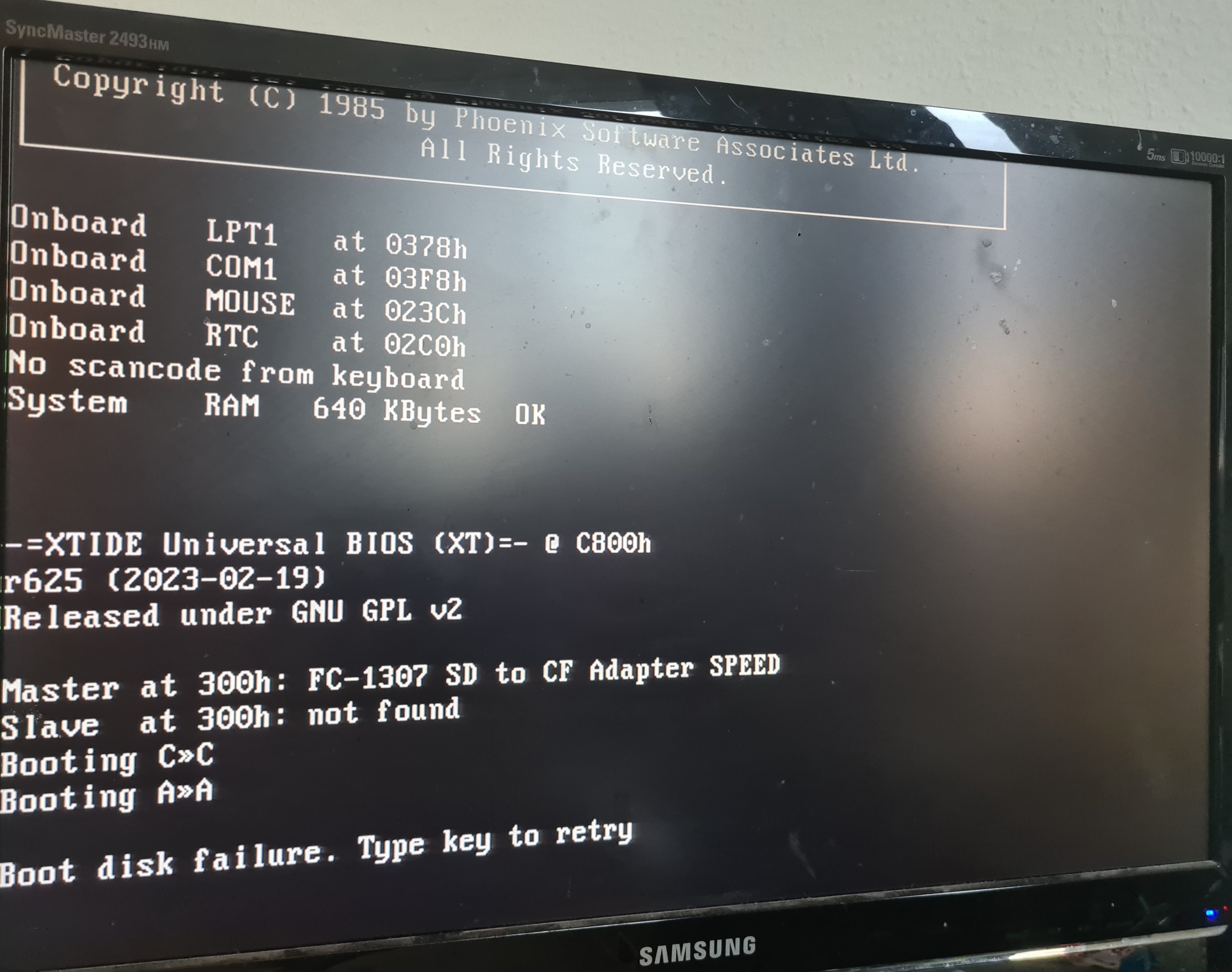I have been following the exact steps as outlined in this tutorial video, with no oddities happening along the way:
https://youtu.be/twQbHWJF7LA
Well, I was able to follow it up and until we got to the Partitioning part, where he says to load DOS up in the machine, presumably meaning the PC-10 in this case.
The PC-10 loads the ISA IDE to SD Adapter just fine, it even tried to look for Drive C (The SD Card) for like 10-15 seconds, until giving up then and there (as seen in the pic).
(ISA IDE to SD card Adapter i got:) 
In other words it seems that the Adapter either doesn't recognise what is on the Card and I've done something wrong in burning the provided image onto it or formating, or it doesn't recognise the card itself to begin with. Its a Brand new 32GB SanDisk SD so that be pretty suprising...
In other words... im out of ideas... i tried different DIP switch configurations and all, but no change. Perhaps the PC-10 III Simply doesnt like the Adapter... or can't run 6.22... im just out of ideas and frustrated. I've had this thing for over a month now with no luck in seeing it run once properly, and original 5,25" DOS Bootdisks are expensive and take a while to arrive. Should I just bite the bullet and go for one? I don't know. Any advice is much appreciated...






